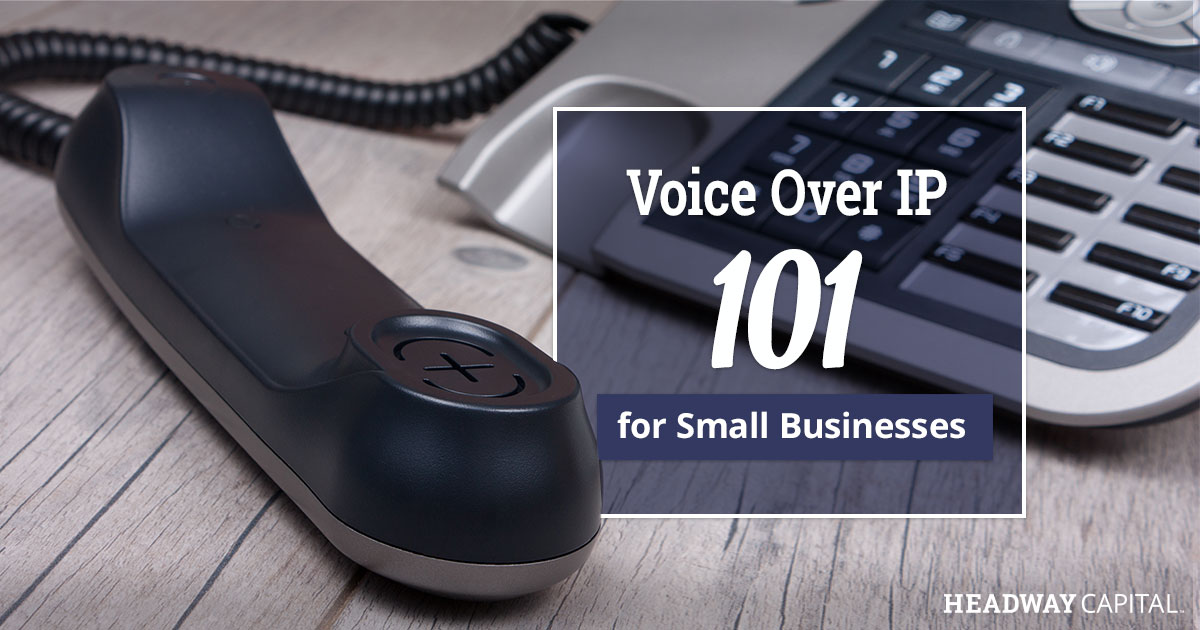A Small Business Guide to Voice Over IP
Today’s small businesses have an interesting relationship with technology. In the past, only enterprise- or corporate-sized entities were privy to the newest tech on the market, as they alone had the resources and budgets to make these considerable purchases. However, subscription-based platforms and wider tech implementation across the board have made these once-exclusive software, tools, and devices available to (small to midsize businesses) SMB users as well.
Voice over IP, or VoIP, is one such innovation that many small businesses have adopted to replace more traditional methods of communicating with customers, outside vendors, and coworkers. For small businesses, specifically, there are a host of features and benefits designed to make your communication and workflow strategies more productive.
VoIP: An Introduction
What exactly is Voice over IP? A collection of technologies designed to simplify communication, both internally and externally, VoIP is a complete redesign of the traditional office phone. By collecting and organizing your voice into digital “packets,” VoIP sends and receives audio information through either wi-fi or broadband connections. Because VoIP phone systems operate through the internet, many small businesses are able to cut their phone lines, saving up to 40% on local calls.
How It Works
Voice over IP relies on a PBX, or private branch exchange, phone system that is hosted on the cloud and managed by your VoIP provider. Although similar to on-premise PBXs, VoIP’s cloud-based alternative reduces the amount of equipment and hardware that small business owners need to make calls, resulting in higher call quality and a reduced need for on-site repair services.
By removing the need for hardware, wired connections or a physical phone, VoIP gives your business a wider range of options for how and where you’d prefer to communicate. There are three primary methods for making a phone call through VoIP:
- Through computers: Whether you use a laptop, tablet or desktop at work, your computer devices can double as phones. This helps minimize the number of devices your small business needs to operate, allowing you to give your employees all the tools they need through a single platform or device.
- Through telephone adapters: A great option for those who prefer their current phone sets, Analog Telephone Adapters turn your traditional phone equipment into a VoIP-friendly alternative.
- Through VoIP phones: Although they look deceptively similar to analog phones, VoIP phones bypass your landlines and instead plugs into the world wide web through your internet modem.
All three methods require both a proper internet connection and software to operate, but they can otherwise be used anywhere you need to make a call — on the other side of the office or the world.
It’s true that in the past small businesses would hire and serve their own communities, but today it’s more common than ever that small businesses need to operate outside a local radius. Whether you employ outside vendors, contract remote freelancers or ship your products across the country, having a communication tool that offers a global reach (without steep out-of-country fees) has become essential for SMB operations. By migrating to a VoIP solution, you can give your business the mobility and flexibility you need to stay ahead of your competitors.
The Small Business Solution
Organizations of all sizes have adopted internet-based communication strategies; however, Voice over IP delivers a host of benefits that will help small- and medium-sized businesses thrive. Some of its best features include:
- Easy scaling: Handling the needs of your new customers while simultaneously accommodating existing ones is a known struggle for small business owners, who often don’t have extra help on hand to deal with higher inquiry volumes. Unlike traditional landlines, which would require rewiring to add additional phones, obtaining another phone through VoIP is as easy as upping your subscription.
- Automated assistance: Voice over IP technology offers more than just call capabilities. Many VoIP providers include automated or virtual assistance for directing customer inquiries to the right support team member or answering basic questions like office hours and important announcements.
- Voicemail management: Customers today expect round-the-clock service, which SMBs often do not have the bandwidth or resources to provide. With Voice over IP, you can listen to voicemails your customers leave after hours through your phone or email transcription, allowing you to promptly respond to urgent messages, both in and out of the office.
- Affordable investment: Part of the reason why so many pieces of technology are unavailable to small businesses is because of their large upfront cost, which many smaller organizations do not have the ability to front. Most internet phone providers alternatively offer subscription-based platforms. This helps you pay only for what you need and allows you to start or stop when you deem necessary.
Installing VoIP
As opposed to installing a new analog phone system, Voice over IP doesn’t require on-site appraisals, visits from technicians or new hardware delivery. In most cases, it’s as simple as finding the right provider, activating your online account, and downloading the necessary software onto your computer before making your first call.






